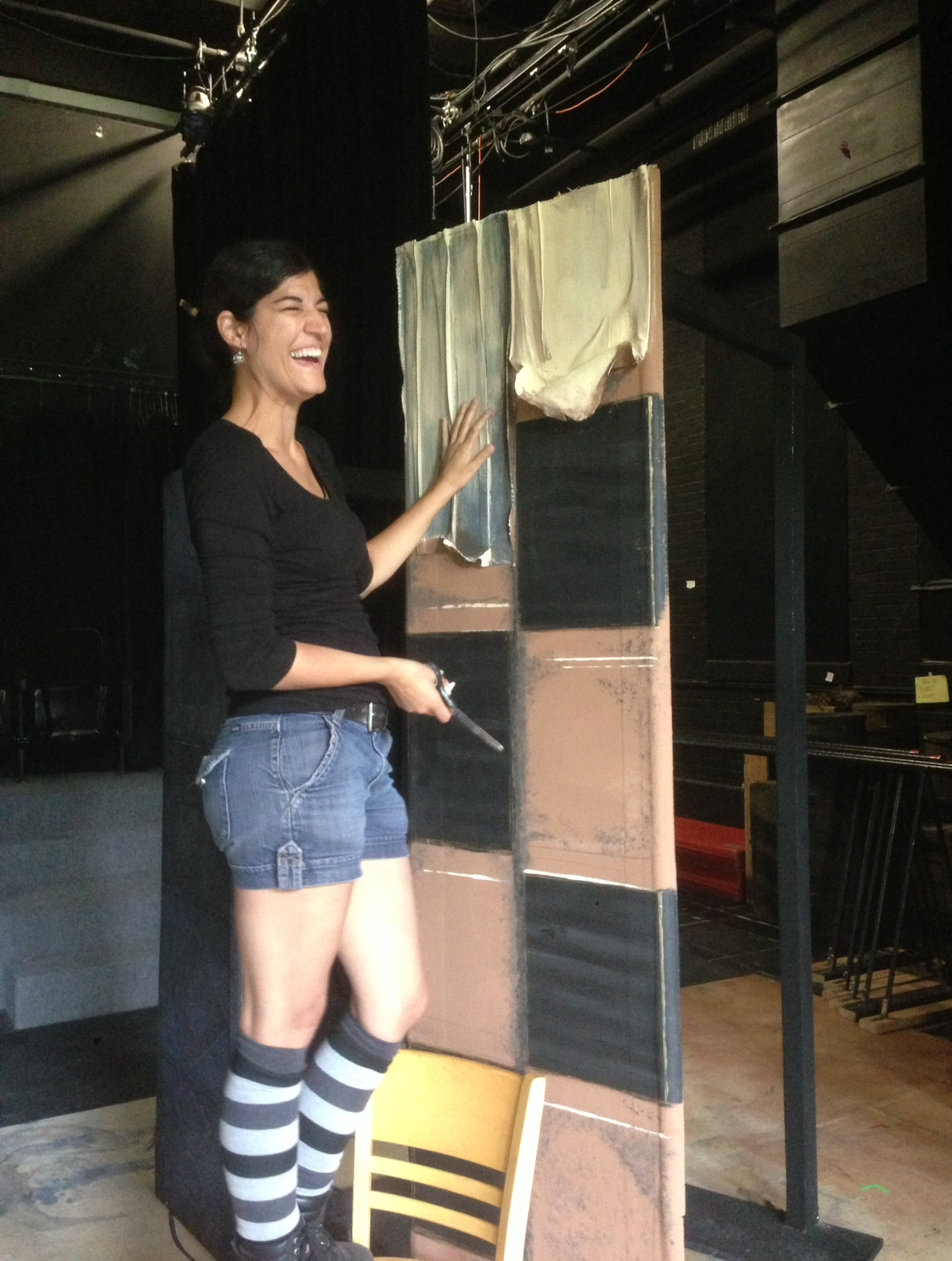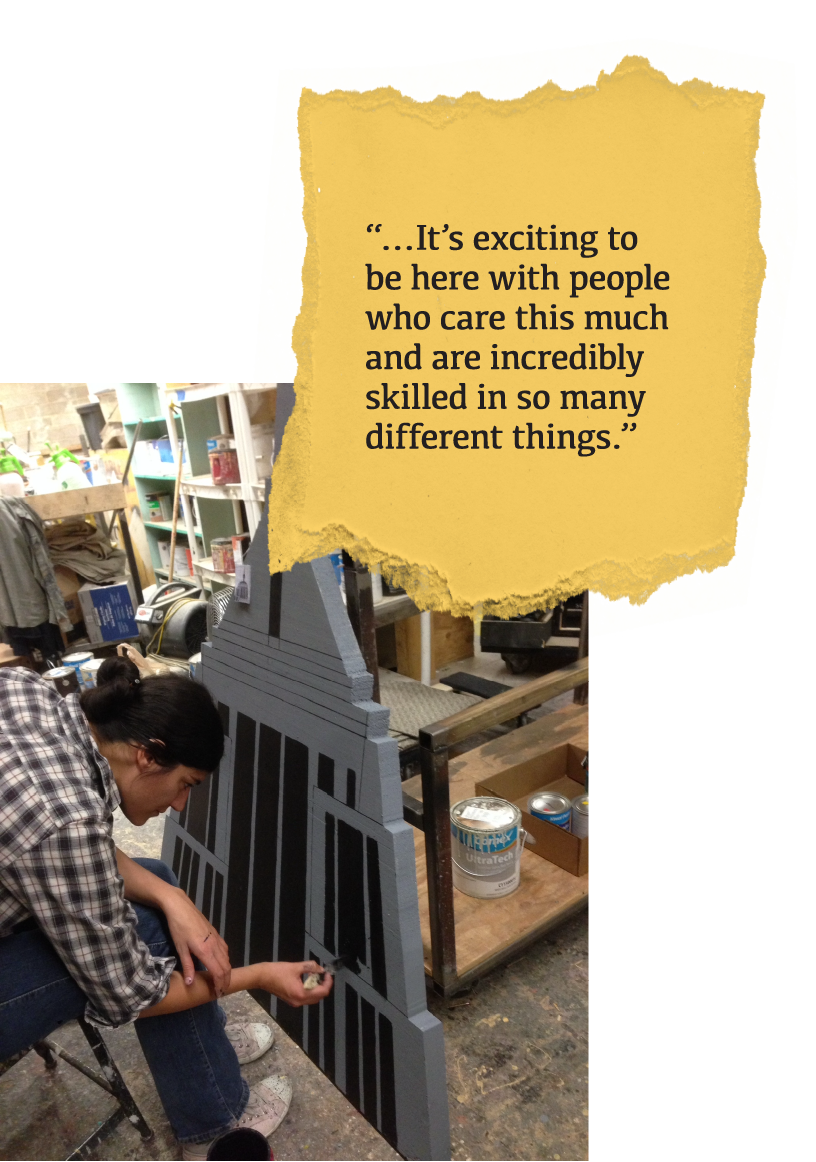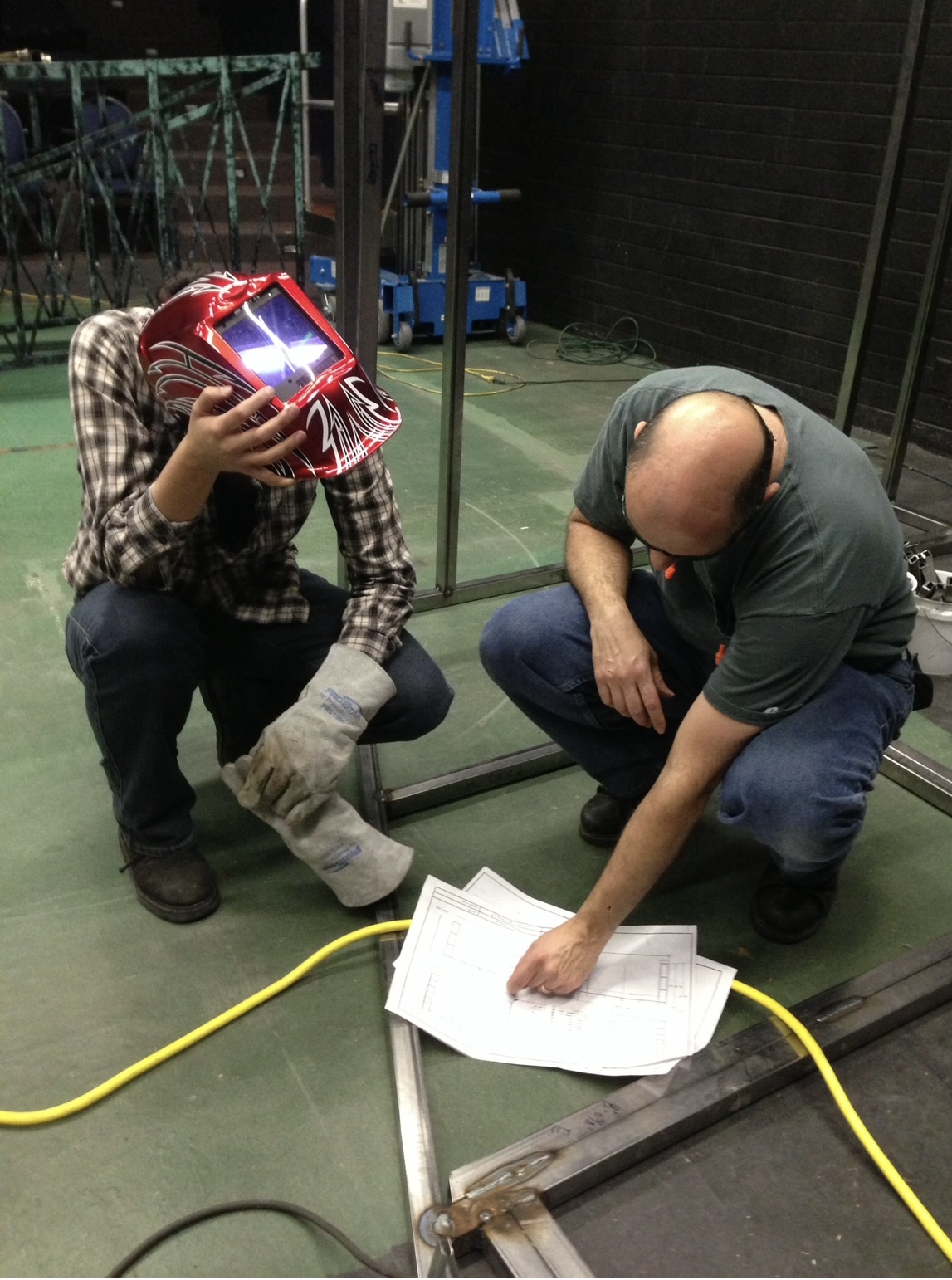Cara Pomeroy (Photo: Joshua Black, Pioneer Theatre Company)
WRITTEN BY EMERI FETZER

Cara Pomeroy formed her first theatre company, Porch Playhouse, when she was in elementary school. She and the other neighborhood kids would meet on her back deck and write quirky scripts to act out.
Later, at Salt Lake City’s West High School, do-it-yourself productions meant students often taught other students how to design sets, run lights, or manage productions. She ended up President of the Drama Club and head of the stage crew.
Years later, after taking a hiatus from college, Pomeroy found herself back in theatre classes at the U. But was theatre still what she most wanted to pursue? And, if so, which part?
“I realized I don’t love the rehearsal process. I don't enjoy getting into a room with a bunch of other people and having to be vulnerable,” Pomeroy admitted.
What she did love was set design.
However, there was a problem. While attending school in Virginia, a professor had said she would never be a set designer if she couldn’t improve her drawing skills. She had earnestly taken drawing classes but hadn’t improved much.
Enter Kyle Becker, Technical Director and Performing Arts Design Program (PADP) faculty at the U Department of Theatre.
Pomeroy remembers Becker’s staggered reaction when she revealed her hang-up.

Cara Pomeroy (Photo: Courtesy of the Department of Theatre)
“He said, ‘There are many different approaches to every part of theater design. If you know the job you want, figure out what your strengths are and develop a process that plays to them. If you can't draw, figure out alternative ways to get visual information across. Spend time investing in the ones that are better for you.’”
That was just the encouragement Pomeroy needed. She dove headfirst into her interests, and found that the PADP was a world rich with opportunity for those who wanted it. The action-oriented, personalized, flexible guidance that Becker provided was the hallmark of the remainder of her study.
It didn’t take long for her professional development to fast-track. On top of work-study in the scene shop, Assistant Technical Director Halee Rasmussen connected Pomeroy to the Grand Theatre, where what started as an internship quickly turned into a role as Master Electrician.
Then, in her junior year, Pioneer Theatre Company (PTC) artist Warren Gerritsen asked Adjunct Professor and Scenic Charge Thomas George for recommendations of scenic painting students who might be interested in working at PTC on an as-needed basis. Pomeroy was first on the list.

Cara Pomeroy (Photo: Courtesy of the Department of Theatre)
“I had this constant flow between working at PTC as a scenic painter, working in the shop as a carpenter and welder, and at the Grand Theater as master electrician. I had this extremely rich educational experience for most of my time at the University of Utah, all facilitated by PADP faculty.” Pomeroy said. “I got paid for almost all that work, and when I finished school, I was ready to jump into any number of jobs.”
It's no surprise that she quit waiting tables and has worked exclusively in technical theatre since graduating in 2017.
For five years she taught technical theater for the Salt Lake School for the Performing Arts, where she built the curriculum from scratch to include stagecraft, woodworking, lighting design, theater electrics, audio engineering, set design, scenic painting, set construction, and stage management.
Alongside her full-time roles she is a freelance set designer. Recent credits include "Of Color" and "Jump" for Plan B Theatre Company, "First Date" and "Perdida" for The Grand Theatre, and "Hir" for Salt Lake Acting Company.
And now, she has returned to Pioneer Theatre Company as technical director, the first woman in the role’s history.
“One of the things I was most excited to do is be a steward of PTC's relationship with the Department of Theatre,” she said.
“From 7th to 12th grade, I saw subsidized student matinees here at PTC. This was held up to me as what theater looks like in its highest form. I'm very emotionally invested in Pioneer’s success. Also, at this point I have spent a whole lot of time seeing how the sausage is made. It's exciting to be here with people who care this much and are incredibly skilled in so many different things.”
Whenever she is teaching or mentoring students, she parallels an approach she learned at the U: focus on hands-on learning and job readiness.
“Some of my students left high school with full set designs in a portfolio,” she said. “Almost all of them would have been ready to go into a job immediately, because there are so many different levels in technical theater and because it takes a huge staff. If you're hardworking and you're dependable, there's work.”
Pomeroy believes a basic knowledge of technical theatre is useful for all performing arts students, no matter if they intend to be primarily under the lights.
“I've always told performers that I highly recommend getting basic electrics and scenic painting training, because those are the two jobs that pull in lots of people for a short period of time. It's easy to find gig work. If you can pad out your performing gigs with electrics gigs, you don't have to go find a ‘muggle’ job,” she said.
Although Pomeroy emphasizes that a bit of everything is required in the field, it is the dedication to always keep learning that makes a great technician. From there, the sky is the limit.
“Performance design and technology is so broad that nobody can be good at all of it,” she said.
“You get new challenges every day. There are rules and standards and guidelines, but so many of the things that we build have never been built before and never will be again. Theatre is collaborative and ephemeral.”










